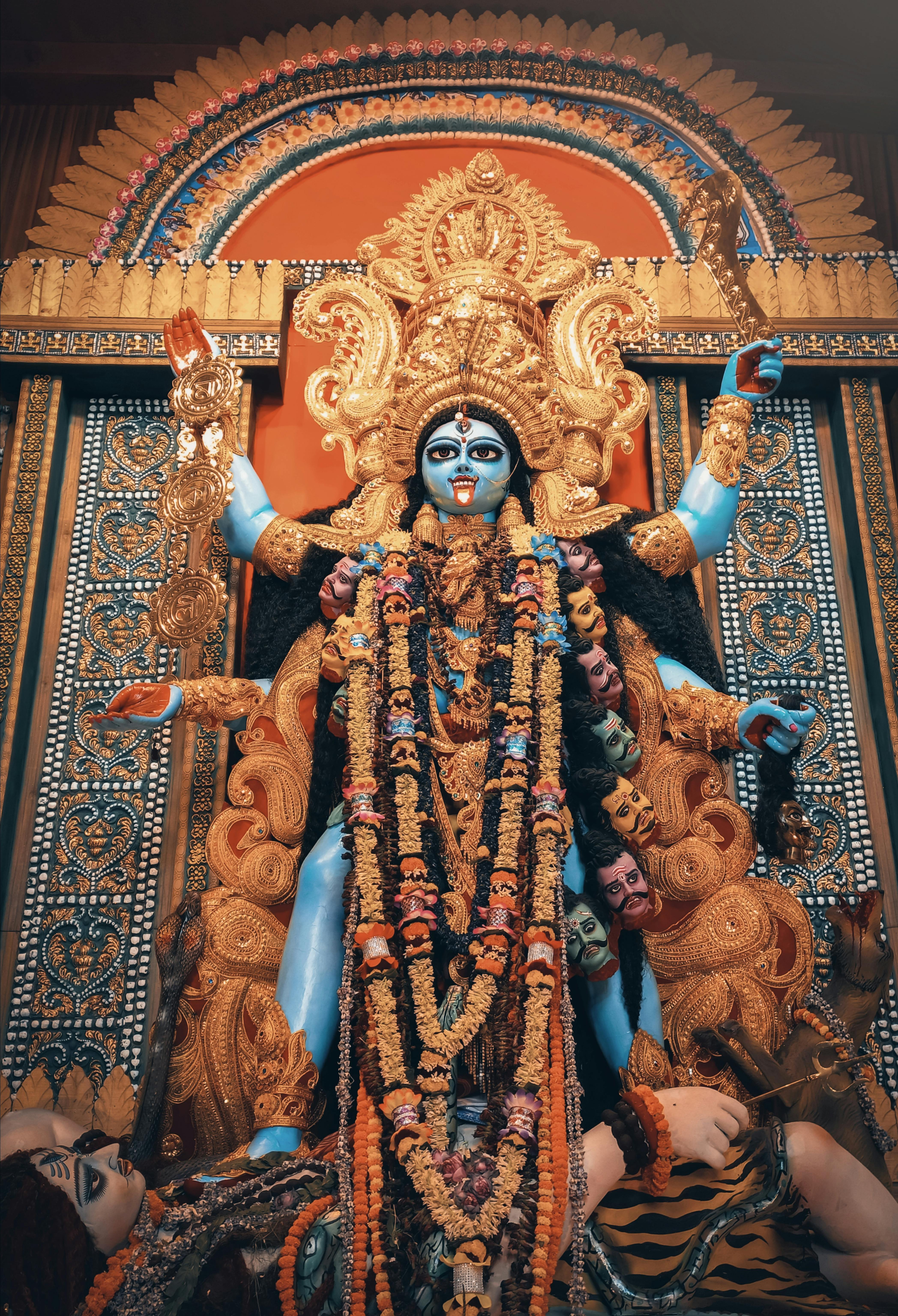Tales of Kali Puja

The new moon day of the Kartik month as per the Hindu calendar is the darkest night of the year. Rows of diyas light up every dark corner of houses, streets and temples, as this night celebrates Diwali. Yet as people bask in the joy of Lord Ram’s homecoming to Ayodhya, West Bengal prepares to welcome the fierce form Of Goddess Durga- Maa Kali.
With the extravagant Durga Puja celebrations ending on tenth day or Vijaydashmi, people of Bengal don’t let their spirit of celebration fade. Just after 20 days, the very Goddess returns but this time in an even more intense yet protective form. Dark skinned, wearing garlands of skulls, long untamed hair and tongue protruding as she steps on Lord Shiva, she is the epitome of power for the righteous and fear for sinners.
History
The initial Celebration of Kali Puja dates back to the 18th century when Raja Krishnachandra of Nadia had popularised it. Later the wealthy families of Bengal, the landlords organised it to also showcase their wealth. It gained further prominence due to Sri Ramakrishna, a staunch devotee of the Goddess and a priest at the Dakshineshwar Kali Temple.

Image credit: Pexels
Story
Goddess Kali had emerged from Goddess Durga during her battle with the demons. Raktabeej, a particular demon had a boon of multiplying himself whenever drops of his blood would fall. Due to this he posed a serious threat to the devtas.
Maa Kali stepped onto the battlefield- Her fearful form already scaring away both the devtas and the demons. As she began to slay Raktabeej’s clones she didn't let his blood fall to the ground. Instead collected it in a bowl and drank it. Raktabeej was killed and everyone was freed from his atrocities.
Consumed by bloodlust the Goddess was hard to pacify. That’s when Lord Shiva lay down in her path and consumed by anger and thirst for blood she stepped on him. In shock and guilt her tongue stuck out and this is the scene she is mostly depicted in.
Rituals
Kali Puja takes place in the night. At midnight the key puja is performed with various offerings to the Goddess. She is worshipped with red hibiscus flower, various fruits and bhog prepared and elaborate aarti.
Kali Puja also has the tradition of animal sacrifice. Though at many places this ritual has been done away with, at temples like Kalighat it is still practiced.
The night of Kali Puja is also a perfect time for the tantric rituals.Performed away from the sight of common people, and mostly in cremation grounds, it is often regarded as something mystical. Devotees also worship her through these methods to connect deeply with the divine feminine energy and experience spiritual growth.
Celebrations
Just like Durga Puja, Kali puja is also celebrated in beautiful pandals across West Bengal. Huge statues of Goddess Kali, upto 22 feet are seen here. The celebrations are a blend of traditional music, lights and devotion.

Image credit: Pexels
Kali puja is also celebrated in homes and at every small and big temple of the Goddess.Along with the glittering lights of Diwali, the night of Kali Puja unfolds - fierce, divine, and filled with the energy of transformation. Other key places to celebrate this are also in Odisha and Assam.
Any puja in West Bengal is incomplete without lip smacking food. Though there is no end to the variety of festive food, the bhog which is offered to the Goddess is everyone’s favourite. Comprising of Khichudi, Labra, Payesh, Sondesh its sure to satisfy one’s soul.
Conclusion
Though Maa Kali is depicted in a ferocious form, she is a very compassionate Goddess who loves all her children equally. But she can also unleash her wrath for wrongdoings. She reminds us that all woman have this fierce and unstoppable energy within them. Their loving and gentle form should not be mistaken as their weakness. Her divine form is the force that destroys all negativity and brings light in all our lives.
❋ ❋ ❋ ❋ ❋ ❋ ❋